#east Asian cultures
Text


🌞 Sun and Moon Pagodas | 日月双塔 🌚
Originally built in Guilin, Guangxi during the Tang dynasty (618-917) the pagodas were reconstructed in 2001.
#chinese culture#chinese history#Chinese architecture#buddhism#pagodas#tang dynasty#asian architecture#China#east asia#east Asian cultures#dynastic china
1K notes
·
View notes
Text
Celebrating the Lunar New Year: Origins, Customs, Traditions, and Festivities
Celebrating the Lunar New Year: Origins, Customs, Traditions, and Festivities
The History and Significance of the Lunar New Year
The Lunar New Year, also known as the Spring Festival, is a holiday that is celebrated by many East Asian and Southeast Asian countries. It is a time for families to come together and celebrate the new year, as well as pay respects to their ancestors.
The origins of the Lunar New Year can be traced back to ancient China, where it was a time to…
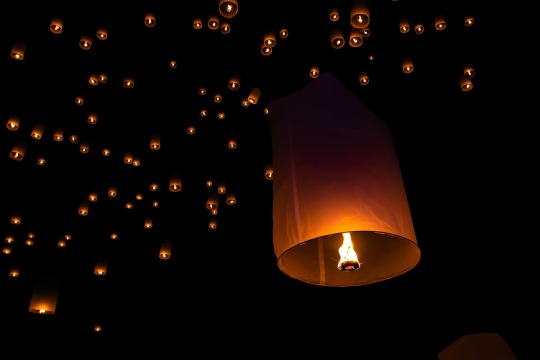
View On WordPress
#Ancestor veneration#Cultural performances#Customs and traditions#East Asian cultures#Festivities#Fireworks#Korean dance and music#Korean Seollal#Lion dance#Lunar New Year#New Year celebrations#Red envelopes#Southeast Asian cultures#Spring Festival#Traditional foods#Vietnamese Tet#Water puppets
3 notes
·
View notes
Text
culture tips for writing asian settings: tea varieTEAs
atla's got major Tea Guy representation in iroh but let's be real, even non-tea guys are going to be drinking tea in an asian-inspired setting—you'd be served it instead of water most places. so, what kind of tea are you picking for them?

as an east asian reader, it can take me out of the setting to see the characters drink something like chamomile (from europe/west asia) or... most herbal teas, to be honest. ngl it was weird to see iroh in the show, characterised as a huuuuuuge tea snob, drink stuff like jasmine (it's fine it's just basic, is all! imo!) or like.... a random flower he encounters in the wild.
when we're talking tea, real asian tea, we're talking about the leaf of the camellia sinensis plant. the huge variety we have of tea is actually from the different ways of processing that exact same leaf. popular varieties include:
green: the leaf goes through minimal processing, can have a bright and even leafy/grassy flavour (examples: gunpowder, longjing aka dragon well, matcha, genmaicha)
white: also undergoes minimal processing, with a lighter flavour than even green (examples: silver needle, shou mei)
oolong: the leaf is semi-oxidised, curled, and twisted—can be characterised by a tanniny flavour with a bright aftertaste. my personal favourite! (examples: da hong pao, tieguanyin, dong ding, alishan)
dark (black): note this isn't the same as black tea as we think of it in english. the leaf is fermented to produce an earthy tea with a flavour like petrichor (examples: pu'er)
all the teas listed in the "examples" are fairly credible teas that i think a real tea snob like iroh would drink.

ok, but what about...
"black tea" as we know it in the west—assam and ceylon etc? this variety is actually called "red tea" in chinese. we don't drink it with milk but to be honest, i've just... never really heard of anyone drinking chinese red tea? which is why i've kept it off the list. (there's lapsang souchong, but i associate that with bri'ish people...) anyone who does drink it, let me know! on the other hand something like assam/ceylon, while extremely delicious and also asian, is a product of british colonialism and is consumed with milk. i think if you wanted to massage some of the traditions & have chai-drinking indian-influenced characters, though, that's cool!
do you actually not drink herbal tea? we do... but a lot of it is considered medicinal. we've got stuff like herbal "cooling tea" with ingredients like sour plum, mesona, or crysanthemum; tea that warms you up like ginseng or ginger. the whole concept of hot/cold in chinese medicine though... that deserves another culture post
camellia leaf murdered my family & i have a grudge against it; what else can my blorbos drink? there'a some good, tasty stuff made of wheat, barley, buckwheat, even soybean. wouldn't be egregious for the characters to drink that!
is milk sacriligeous? a real tea snob would think so, but a lot of asians nowadays are chill about milk in tea—usually in western-influenced red tea. hong kong, thailand, india, taiwan, and malaysia (among others) have their own cultures of milk tea, which has even become a democratic rallying point.
what do you think of iroh inventing bubble tea? my main issue with it is it's anachronistic! it was invented in taiwan in the late 20th century, but atla's set in the equivalent of the mid-19th century... you could also make arguments about whether iroh's too snobby about tea to invent it LOL
there's soooo much more i can say about all this so: keep your eyes peeled! i'll talk about medicine & tea ceremony in the near future <3
disclaimer | more tips
#atla#atla culture#atla meta#avatar the last airbender#iroh#asian culture tips#tea#so i'm making this post as not QUITE a certified Tea SnobTM the way iroh is#but i do really love and enjoy many east asian teas#and i start every day off with a cup of strong milk tea (probably reflecting my own cultural heritage tho ;) )#and i do look down on white ppl tisanes. that shit aint good!!
1K notes
·
View notes
Text
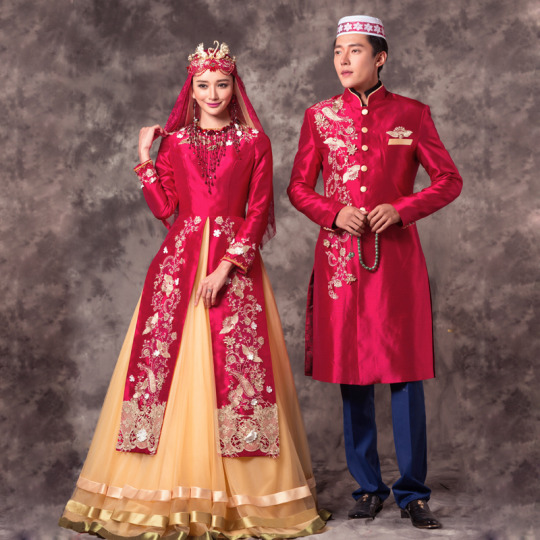

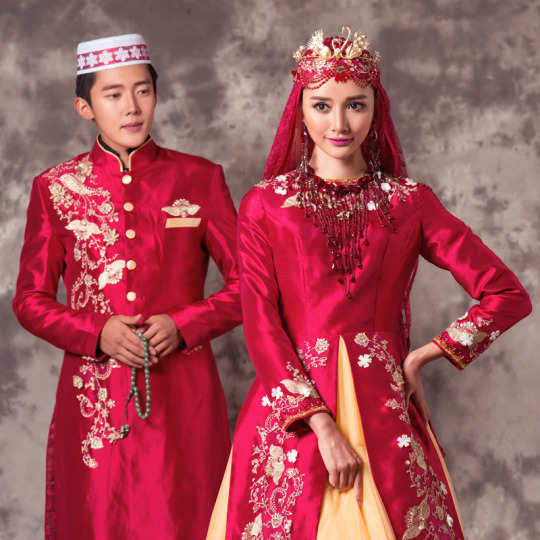
#回族#hui people#china#chinese#chinese minority#chinese folk#chinese fashion#chinese outfit#chinese attire#chinese culture#chinese clothing#asian#asia#east asia#woman fashion#women's fashion#man fashion#asian outfit#asian attire#asian costume#asian culture#asian fashion#asian folk
259 notes
·
View notes
Text

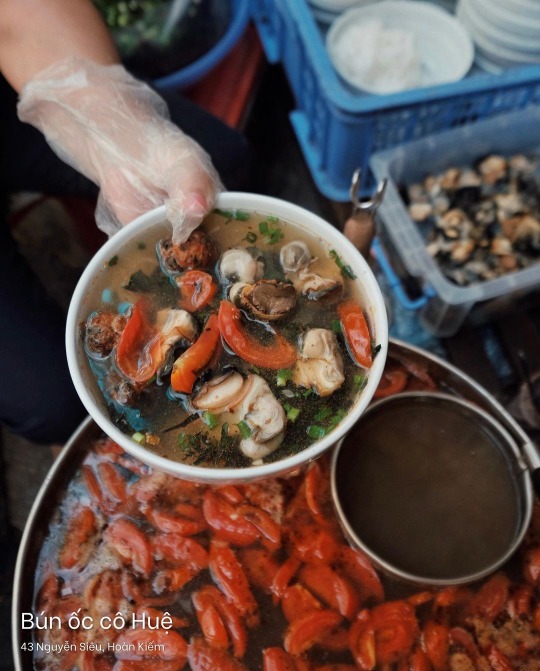
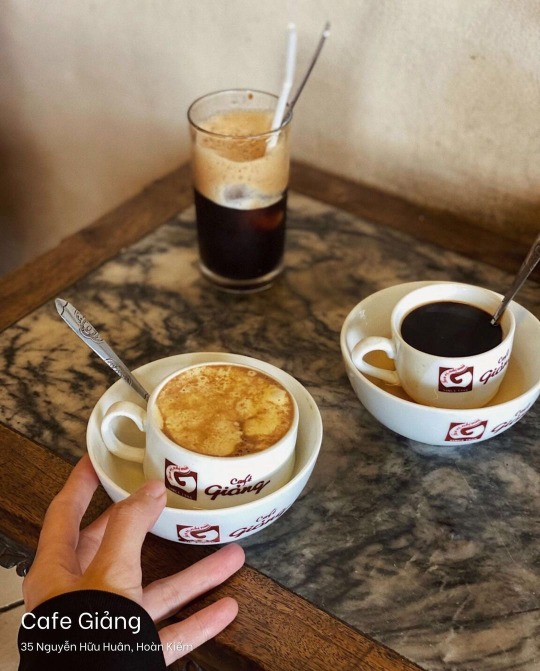



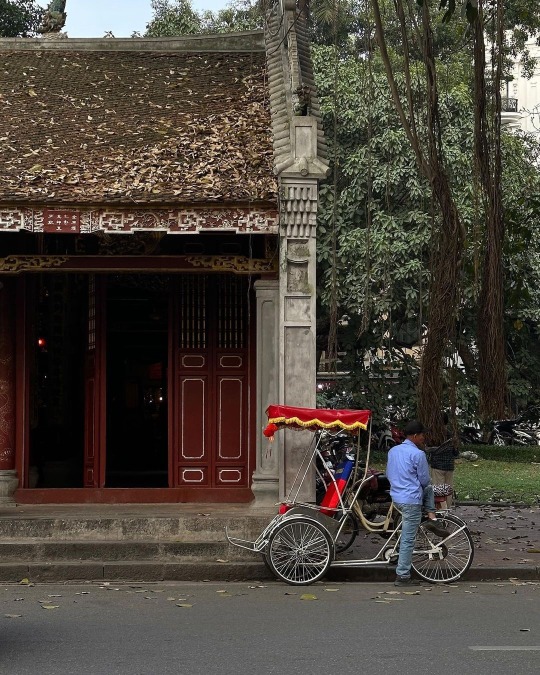



Street food and scenery in Hanoi, Vietnam. Credit to nofoodphobia (Instagram).
#vietnam#vietnamese#culture#history#travel destinations#travel#hanoi#southeastasia#south east asia#southeast asia#se asia#seasia#street food#foodie#food recommendations#asian food#vietnamese food#coffee#vietnamese coffee#looks tasty
769 notes
·
View notes
Text
"why couldn't shuro have just been honest about what he felt with laios and falin it's not that hard" are you. are you White
#dungeon meshi#shuro#toshiro nakamoto#look you can hate him for other things but this is very clearly a case of cultures (& personalities influenced by these cultures) clashing#shuro is japanese/east asian-coded and laios is european white boy#i am not japanese but i also come from a collectivistic society#pakikisama is a filipino value both prized and abhorred#it relies heavily on being able to read social cues and prior knowledge of societal norms#shuro being from a different country/culture is important to his character#his repressed nature is meant to contrast with laios' open one like that's the point#they both had similar upbringings but different coping mechanisms#shuro explicitly admits that he's jealous of laios being able to live life sincerely#anyway the point is they were operating on different expectations entirely and neither had healthy enough communication skills#to hash things out before they got too bad#re his attraction to falin i personally believe he unfortunately mpdg-ed her#she represented something new & different. a fresh drink of water for his parched repressed self#alas not meant to be#i'll be honest the way ryoko kui handles both fantasy & regular racism in dm is more miss than hit for me#i don't doubt that a lot of the shuro hate is based off of marcille's pov of him#marcille famously racist 😭#characters' racist views don't often get (too) challenged#practically everyone is casually racist at some point#anyway. again if you're gonna hate shuro at least hate him for being complicit in human trafficking & slavery#he couldn't help falling for the wrong woman goddamn 😭#calemonsito notes
204 notes
·
View notes
Text
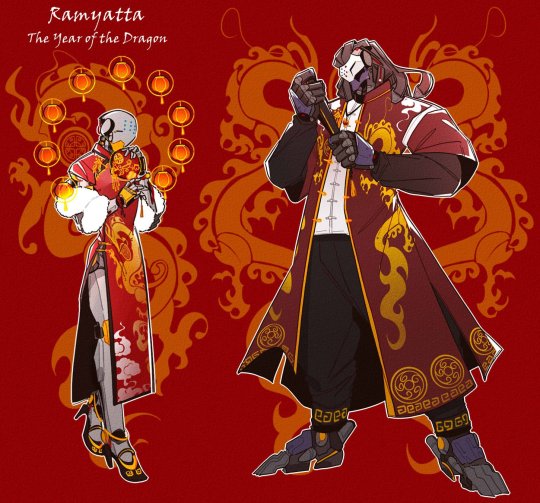


Lunar New Year Zenyatta and Ramattra by eweeppy (1, 2)
#zenyatta#ramattra#eweeppy#overwatch#fan skin#fanskin#lunar new year#east asian culture#chinese culture
161 notes
·
View notes
Text
Look what Google just recommended to me!!!!
I already own (and love) Shabbat and Portico.
But I am OBSESSED with the rest and must acquire them immediately.
Top of my list is Love Japan because LOOK AT THIS BEAUITFUL BOWL OF MATZO BALL RAMEN!!!!!
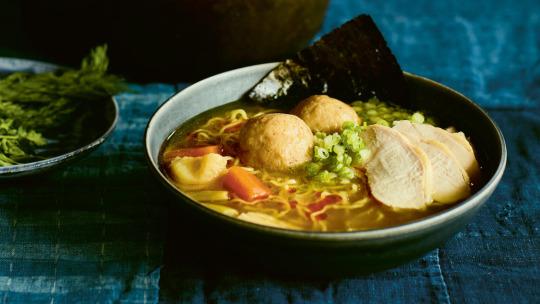
We hear a lot about Jewish people in Europe and MENA, but we do not hear a lot about Jewish culture as it blends with East Asian cultures, and that’s a shame. Not just because it erases the centuries of Jewish populations there, but also because there are plenty of people of mixed decent. People who may not have come directly from Jewish communities in East Asia, but people who have a Japanese Father and a Jewish Mother, for example. Or people in intercultural marriages. These are all real and valuable members of the Jewish community, and we should be celebrating them more. This cookbook focuses on Jewish Japanese American cuisine and I am delighted to learn more as soon as possible. The people who wrote this book run the restaurant Shalom Japan, which is the most adorable name I’ve ever heard. Everything about this book excites and delights me.
And of course, after that, I’m most interested in “Kugels and Collards” (as if you had any doubts about that after the #kugel discourse, if you were following me then).

This is actually written in conjunction with an organization of the same name devoted to preserving the food and culture of Jews in South Carolina!
I’m especially excited to read this one, because I have recently acquired the book Kosher Soul by the fantastic, inimitable Michael J. Twitty, which famously explores faith and food in African American Jewish culture. I’m excited to see how Jewish soul food and traditions in South Carolina specifically compare and contrast with Twitty’s writings.
I’m also excited for all the other books on this list!
A while ago, someone inboxed me privately to ask what I recommended for people to read in order to learn more about Jewish culture. I wrote out a long list of historical resources attempting to cover all the intricate details and historic pressure points that molded Jewish culture into what it is today. After a while I wrote back a second message that was much shorter. I said:
Actually, no. Scratch everything I just said. Read that other stuff if you want to know Jewish history.
But if you want to know Jewish culture? Cookbooks.
Read every Jewish cookbook you can find.
Even if you don’t cook, Jewish cookbooks contain our culture in a tangible form. They often explain not only the physical processes by which we make our meals, but also the culture and conditions that give rise to them. The food is often linked to specific times and places and events in diaspora. Or they explain the biblical root or the meaning behind the holidays associated with a given food.
I cannot speak for all Jews. No one can. But in my personal observation and experience—outside of actual religious tradition—food has often been the primary means of passing Jewish culture and history from generation to generation.
It is a way to commune with our ancestors. I made a recipe for chicken soup or stuffed cabbage and I know that my great grandmother and her own mother in their little Hungarian shtetl. I’ll never know the relatives of theirs who died in the Holocaust and I’ll never meet the cousins I should have had if they were allowed to live. But I can make the same food and know that their mother also made it for them. I have dishes I make that connect me to my lost ancestors in France and Mongolia and Russia and Latvia and Lithuania and, yes, Israel—where my relatives have lived continuously since the Roman occupation even after the expulsions. (They were Levites and Cohens and caretakers of synagogues and tradition and we have a pretty detailed family tree of their presence going back quite a long time. No idea how they managed to stay/hide for so long. That info is lost to history.)
I think there’s a strong tendency—aided by modern recipe bloggers—to view anything besides the actual recipe and procedures as fluff. There is an urge for many people to press “jump to recipe” and just start cooking. And I get that. We are all busy and when we want to make dinner we just want to make dinner.
But if your goal isn’t just to make dinner. If your goal is to actually develop an understanding of and empathy for Jewish people and our culture, then that’s my advice:
Read cookbooks.
#Judaism son#Jewish culture#Jewish cuisine#culinary tradition#culinary history#foodways#cultural preservation#tangible culture#jumblr#Judaism#food#cuisine#kugel discourse#Jewish joy#jewish positivity#Jews around the world#East Asian Jews
148 notes
·
View notes
Text
ok ok, listen. I am gonna be straight with you. I am not a Patholic nerd and I really like the game. it has one of the most extraordinary stories/lore, plus its gloomy aesthetic is just my shit. but as a local Khalkh Mongolian, I very much dislike the herb bride designs. they have no inspiration from the cultures they are supposed to vaguely resemble, like literally nothing. i am a visual type of person and love it, ADORE it when shit is pretty to look at, it's in my blood. instead they opted for looking like straight-up savage unevolved cartoon cavewomen with skimpy outfits and foliage in their hair for good measure.
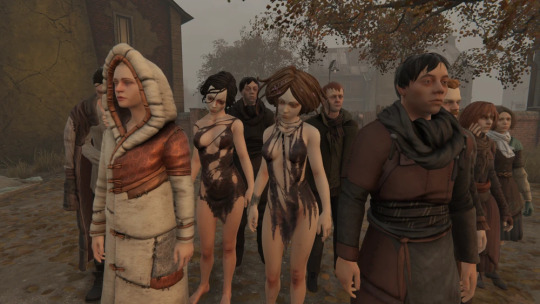
they look so out of place here, which you could argue its intentional but cmonnn???
here’s my take on how they could have looked like or at least what kind of things the devs missed out on:
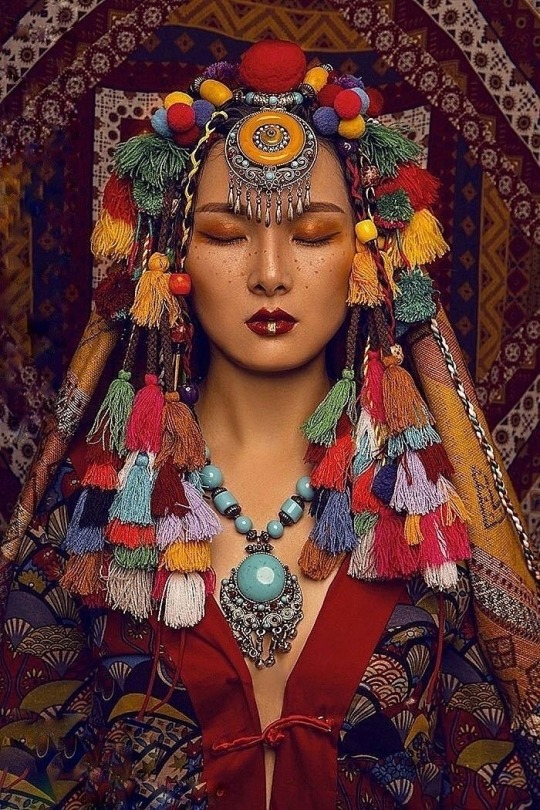

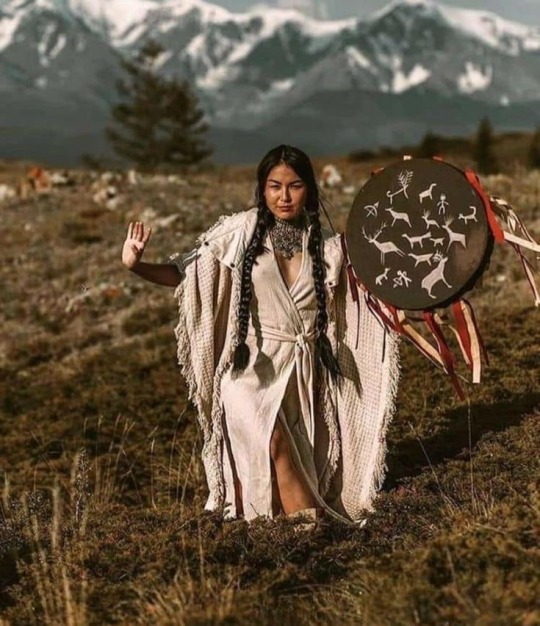

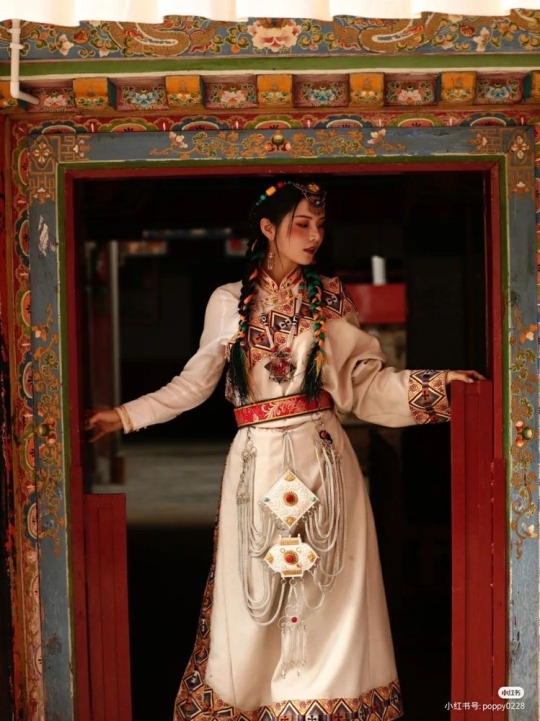

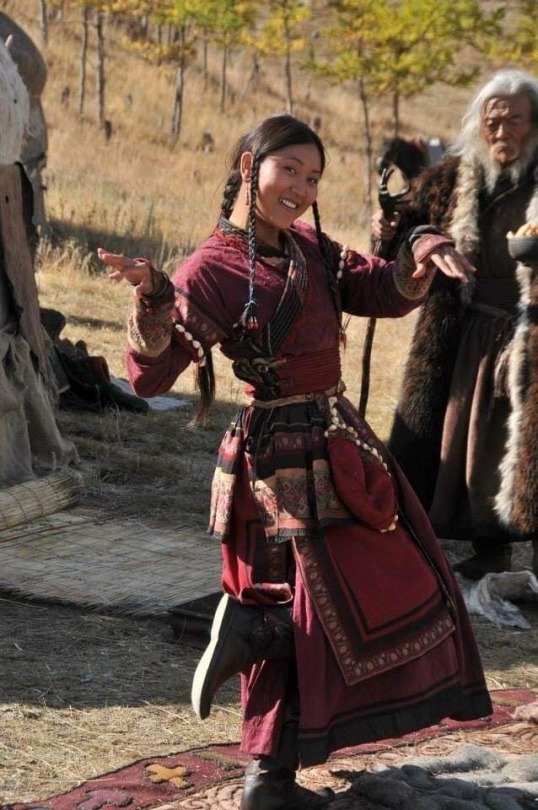

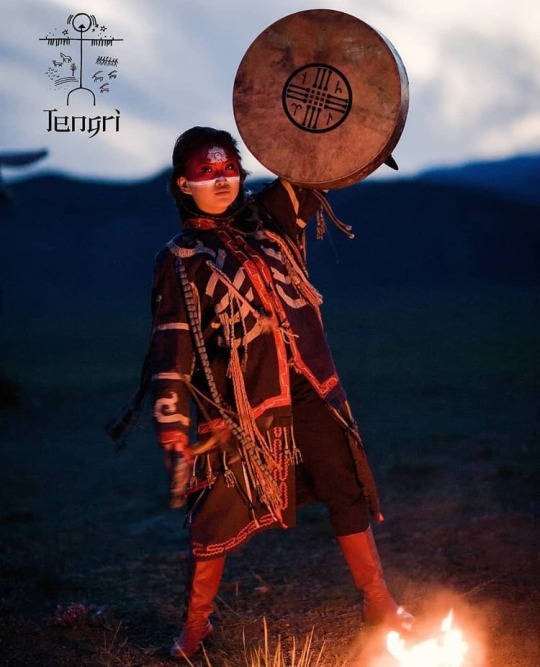


—and their hair should have been braided in many different styles? all three of the major inspirations for the kin doesn’t like loose hair, if we are speaking traditionally. i really like these thin braids:


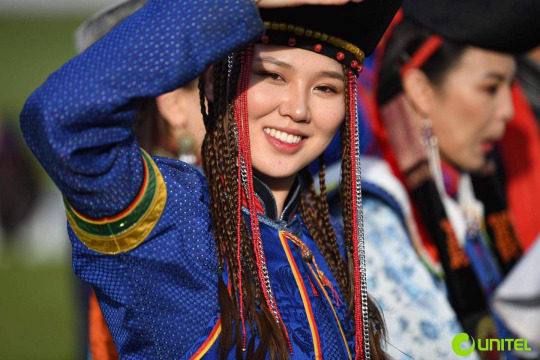
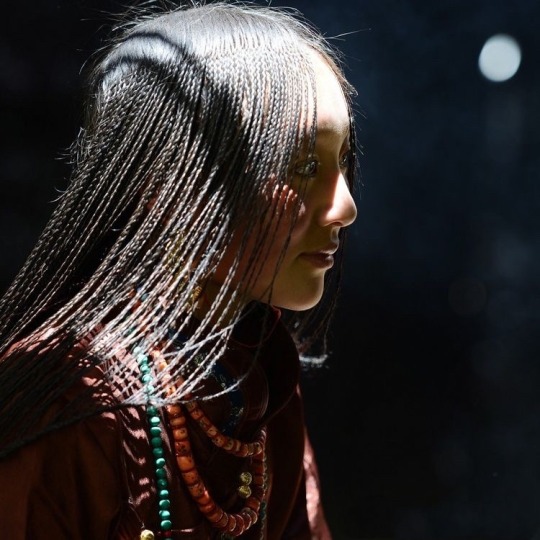
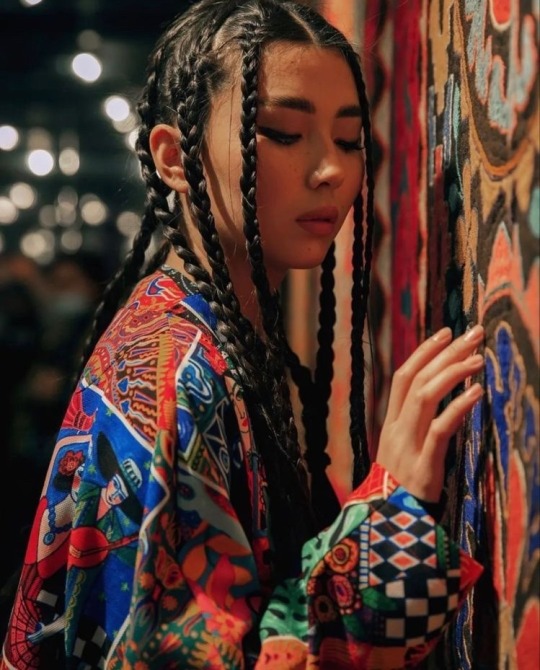
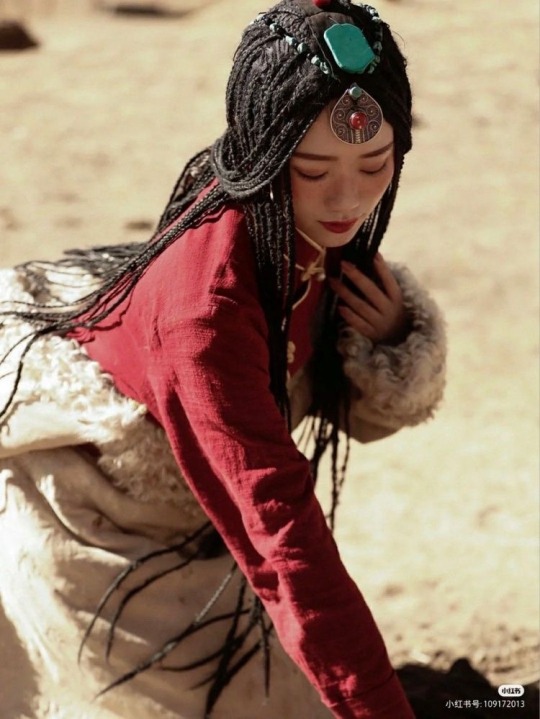
yeah, i get Orkhon economy is in shambles so no jewelry and colorful clothes but at least cover their boobage?? idk just slap on thin deel + belt and then just rough it up? make decorations out of wood?? and beads out of bones without just dangling them?? just because shit is desperate doesn't mean we gotta lose our dignity too?
edit: This post’s main point is not about restricting the nudity or the creative liberty i am only saying they should have approached this aspect from a different perspective with a native eyes on the IPL development team. It may have came off that way because i used the word boobage huh?
#everything doesn’t have to be accurate but keep your shit AUTHENTIC#do not ‘umm actually’ me unless you are a local or studied altaic cultures#deepening my lore perspective is ok too. but do not be a snob w/ me#dancing so hard that your clothes fall off is kinda bullshit excuse but ok fine. it's an interesting idea. initially#yeah herb brides get empathtic moments but we do agree this is a fetishization of poc women to a degree right? like a sexualized caricature#one of them straight up die for a open your heart joke lol wtf#and if you are gonna sexualize something at least DO IT RIGHT#there’s much so cool shit you coulda done here but nooOO savage east-asians are apparently the hip thing to do ugh#but handling of the colonialization aspect is horrible#you google traditional clothes on our culture almost every single one of those women and they will have a hairdo and a deel+belt#p.s. we don't worship bulls#or an evil entity#our religion is tengri or buddhism. some of us are monotheist too#random trivia: the pronoun “I/me” is not written “be”. it's “BI”#random trivia: unmarried woman/girl is called a sewger#pathologic#pathologic 2#мор утопия#мор утопия 2#herb brides#flintstones looking ass#god i am so gay for all these women above (except the herb bride hell nah)#makes the 4 hours i spent on this so worth it#if I had a nickel every time if slav games i liked had an anti-asian undertones#I’d have two which is not a lot but it’s weird that it happened twice#mongol#tibet#buryat#mongolia#buryatia
419 notes
·
View notes
Text
Ink!Sans Cultural Character Coding
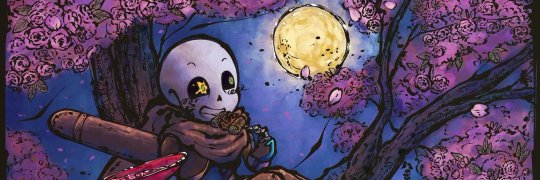
art by @/sakuramochi64 on twitter
Disclaimer!
This post is meant to present and analyse obvious and obscure East Asian (Jpn-Chi) ethnic and cultural influences on Ink!Sans character.
If any of the material in this essay is incorrect and/or considered morally offensive, please contact me!
Ink!Sans by @comyet
↓↓↓↓↓↓↓↓↓↓↓↓↓↓↓↓↓↓↓↓↓↓↓↓↓↓↓↓↓
/Despite the fact that Ink is a non-human monster skeleton character, he is often portrayed with human-like traits and characteristics that range between a bunch of topics. One of them that's portrayed as very predominat to his character is his etchnic cultural background/inspiration. Again, this post is meant to analyse and to discuss such inspirations and how it affects his character./
.
.
.
INSPIRATIONS
According to Ink's creator, Comyet, the concept of Ink!Sans was conceived by a Japanese and Chinese ink calligraphy brush. These are known as Fude brushes (筆) and Xuan brushes (宣笔 Xuān bǐ) respectively. This ultimately inspired his ink abilities and powers, just like his concept of being an 'artist' (In simple words, it inspired Ink as a whole).
'The history of ink brushes and the ink material is a long and complicated journey to cover, but it's important to know that these were invented in ancient China around 300 B.C (traditional Chinese: 毛筆; simplified Chinese: 毛笔; pinyin: máo bǐ) and are used in a vast variety of East and Southeast Asian countries, like Korea; Vietnam and Japan.
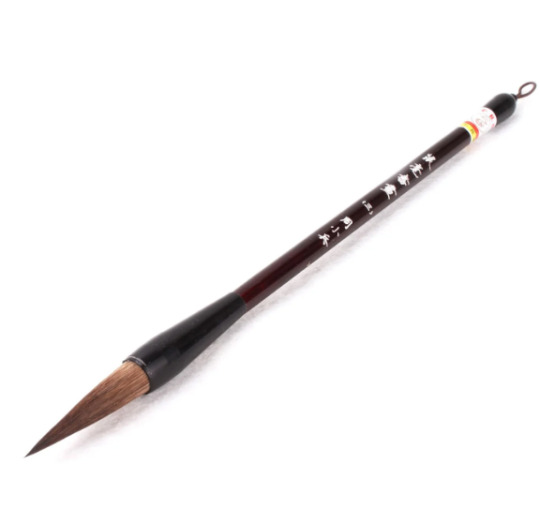
example of the brush Ink!Sans was inspired by.
At glance, ink (the material) is an enduring medium that still surrounds society till this day and it's used in multiple cultures across the world.
Writing with ink calligraphy brushes are common in the Europe and the Middle East as well, but the material was crafted of iron salt and oak galls. When written, ink is often a dark color but fades to brown tones of rust'. Such phenomenon was detectable in the Middle Eastern Bible manuscripts and even ancient European literature as an example.
Ink!Sans was based of the ink material created in East Asia, most commonly made with carbon-base black substance, which preserverd the dark coloration even after hundred of years.

↑ Example of an ancient Japanese painting, such arts are called 'Sumi-e' (Japanese, 墨絵) or ' Shuimohua' (traditional Chinese,水墨畫).
Unlike iron gall ink, carbon based inks are still very common to this day.
'Throughout the long history of East Asia, writing with ink was a very important ability to have. The Materials were made with precision, long traditions of training in calligraphic skills were developed, and writing and literacy were often wrapped up in questions of social status and class.
Although the development of major Chinese calligraphic scripts was completed by the fourth century, the art of calligraphy continued to evolve over the millennia. Master calligraphers with years of training and dedicated practice were recognized for their personal styles, and later generations of artists often adapted brushstrokes and designs to their own style. This stylistic evolution of scripts continues to enliven Chinese calligraphy to the present day.
Calligraphy was an important mark of personal learning and aesthetic sensibility in Japan. Portable, lacquered wood boxes were designed to hold an inkstone and water dropper in the base, with trays to hold writing brushes and solid ink sticks. Inkstone boxes (硯箱,suzuribako 'ink stone box' ) could be easily carried to a pleasant location, even outdoors in fine weather, to write correspondence, diary entries, or poetry.'
Fun fact: Ink's font 'Note This' is inspired by such ancient writing.

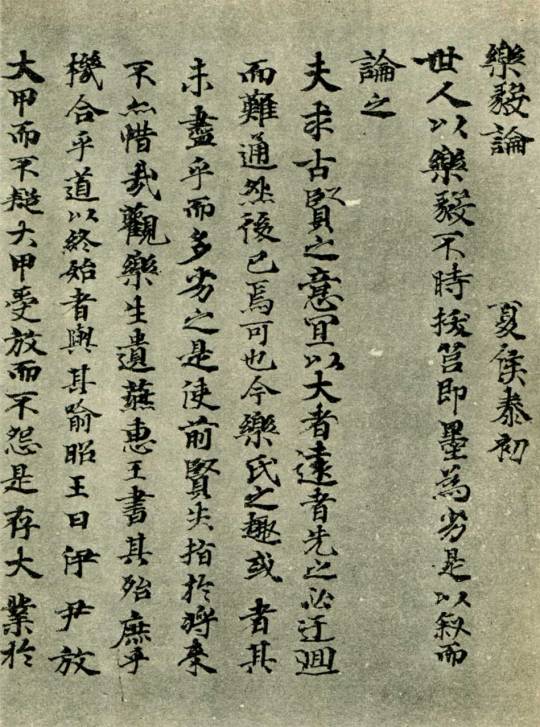
Example of Ink's canon speaking font and Japanese calligraphy (書道, calligraphy)
'However, when it comes to the subject of painting with the material, different schools of painting existed in China, the scholar-painters of Song-dynasty China generally preferred ink-based paintings over the more colorful, pigment-filled paintings produced historically and at the painting academy. Chinese painting manuals and commentaries from the Song (Sung) and Yuan dynasties (rarely mention pigments, possibly because it was assumed a painter’s skill shouldn’t depend on the use of colors.
Japanese artists are known for using media appropriate for the subject matter. Images depicting traditional Japanese narrative tales were typically rendered in opaque colors with outlines created in ink and later obscured by color overlay. Ink monochrome was closely associated with Chinese styles, particularly those transported to Japan via Zen Buddhism. Ink-based forms created with modulated strokes and layered washes suggested introspection and spiritual exploration.'
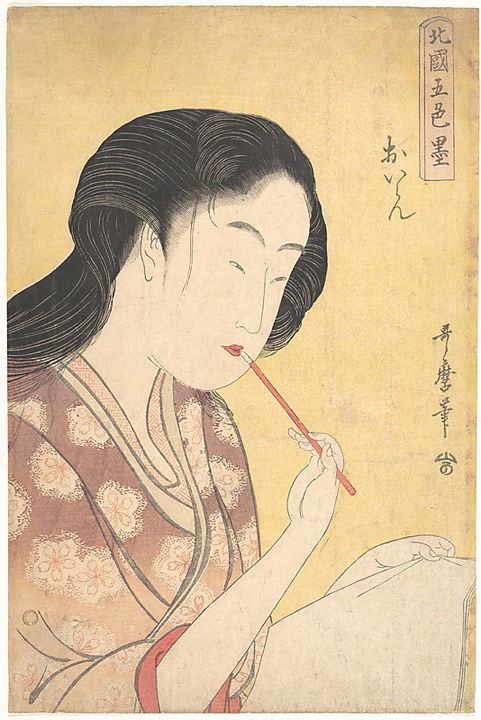
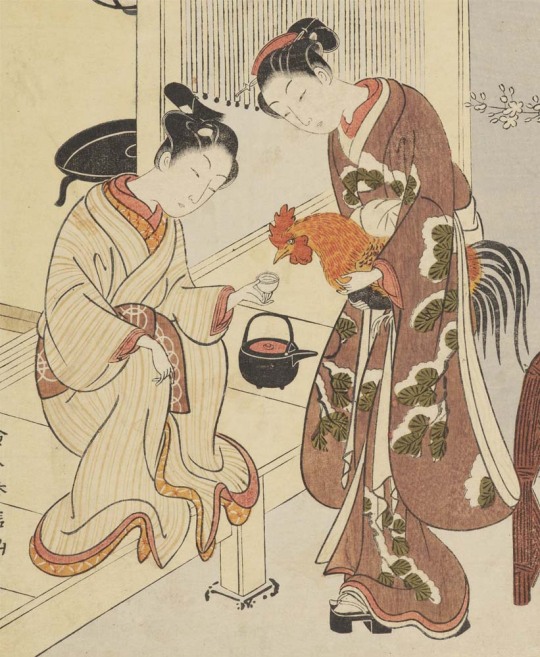
Ancient Japanese paintings that uses dull colors and ink outlines.
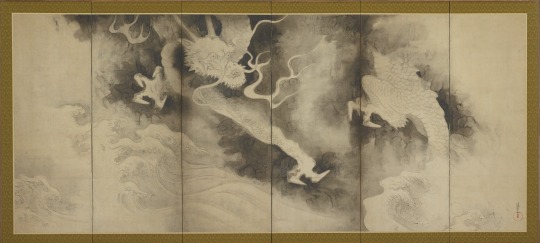
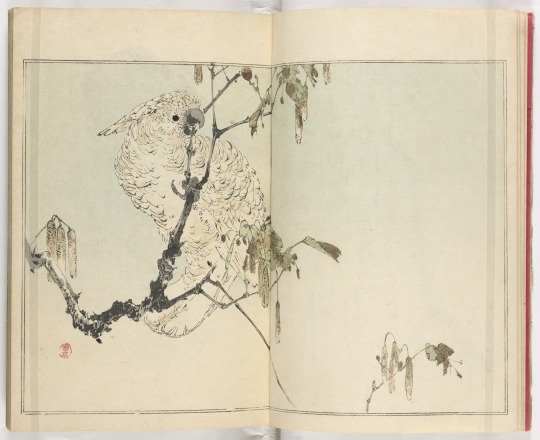
Exhaustive examples of ancient Ink paintings. Dragons and Clouds 雲龍図屏風 (左隻)and Seitei kachō gafu 省亭花鳥画譜
.
.
.
DESIGN
Also clarified in an ask on her main blog, Comyet describes that traditional Japanese clothing inspired Ink's 2020 outift redesing, such inspirations are very obvious in first and second analysis.
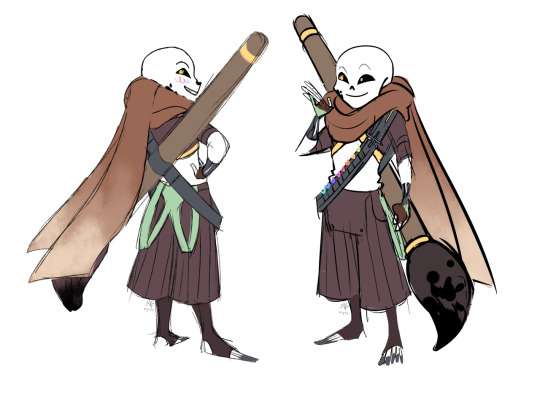
Ink!sans reference sheets for the 2020 design, which can be found in Ink's official F.A.Q
Starting off, the pants.
Ink's pants were inspired by Hakama pants (袴), a traditional Japanese garment designed as a skirt-like pants often worn over any type of kimono. His pants seems to be inspired by umanori (馬乗り)Hakamas, whose had a division in the middle and often used in horse-riding activities.

Example of a Hakama.
The Hakama is a wide pleated pants (seven pleats, five in front and two behind), with a rigid backrest (腰 板,koshi ita) placed at the level of the lumbar region. It is tightened with four straps, on the left and on the right, as well in front as behind.
Historically, the origins of the Hakama dates back to the Sui and Tan dynasty were this garment was worn by the Chinese imperial court. Later, the Hakama exported itself to Japan during the Kamakura period (1185 to 1332) and became a traditional garment for the upper classes of Japanese society as well as for samurai warriors who wore it over a kimono (Hakama-shita).
During the history of Japan, the Hakama took on different styles and was mainly made for men, although in the beginning it was a unisex garment. During the Asuka and Nara era (6th to 8th century), the Hakama came in two versions. The first one was open on the front and was tied on each side of the waist with two straps. The second one was open on the left side and closed on one side only.
During the Edo period, the Hakama was worn by the nobles as a complement to the outfits of the time such as the noshi and the kariginu (狩衣; a sleeveless jacket with very pronounced shoulders). Very functional, these pants were also adopted by samurai warriors who usually wore them as Kamishimo (上下/裃). It is a combination of kimono, Hakama and kataginu. When the warrior visited the shōgun, he wore a Hakama called naga-bakama which greatly restricted his movements.
Edit:Currently, hakamas are both worn by men and women.
However, under the scarft, Ink also seems to use a jacket that features a collar that has striking similarities to a Mandarin collar (or Mao collar)

Ink!sans reference sheets for the 2020 design, which can be found in Ink's official F.A.Q
Mandarin collars originated in ancient China and were worn by Qing-era bureaucrats.

Picture of a Chinese man in a traditional Mandarin collar (early 1900's)
These are short, stand-up collars and sometimes fasten in the center with a small hook. Such collars are still used today for both fashionable and practical reasons. One example of modern usaged of the clothing is seen in the U.S Amry combat uniform, that features a stand-up collar of Chinese origin.
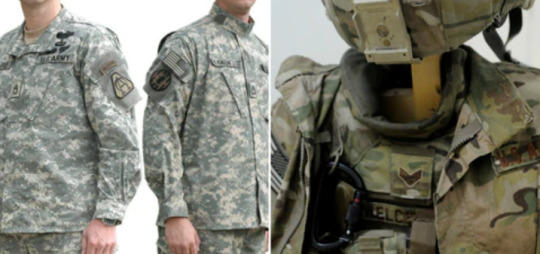
Picture of the U.S Army combat clothing
Regarding of color palette, Ink!Sans redesign uses soft but dull colors and a sinple silhouette and fabric for the outift, such design choises are similar to male kimono's dressing codes which uses dull colors (like dark blue, grey, green and occasionaly brown). Male kimonos are always more simple in design compared to female kimonos.
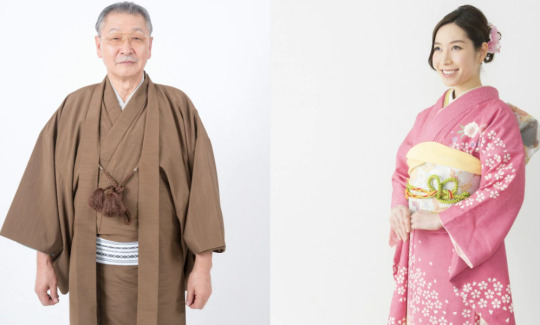
Photo that shows the difference of kimonos used by men and women
Although not specified, Ink seems to wear brown thigh-high socks, also known as 'tights' under the outfit. Japan has a long-standing cultural tradition of wearing such piece of clothing, this trend is particularly popular among young people and is often associated with the "gyaru" subculture, which emphasizes fashion, beauty, and individuality. Additionally, thigh-high socks are often worn with school uniforms, and are considered a symbol of youth and innocence. Additionally, it is also considered fashionable and trendy in Japan, and you can see many young people wearing them.
In regards of physical appearance, Ink also seems to follow ancient Japanese and Chinese beauty standarts, specially one's targeted towards women.
In ancient japan, specially towards the Nara (奈良時代, Nara jidai), Heian (平安時代, Heian jidai) and Edo period (江戸時代, Edo jidai) the beauty standarts for Japanese women were of those with slim eyebrowns, flat oval face shape and narrowed eyes.
Such attributes can be observed on Ink!Sans apperance.

Visual representation of old Japanese beauty standarts
/Keep in mind that some of such standarts presented are now out of fashion due to the westernization of asian countries. Specially regarding eye shape/
.
.
.
MUSICAL THEMES
Ink!Sans has a long history of being associated with East Asian music, specially those of Japanese origin.
Themes that comyet associated with him includes, 'Code Wu- Asia River Album 江水/Asia River' ( post can be found here), 'Dullahan under the willows' and 'Futatsuiwa from Sado (二ツ岩で佐渡) both from the japanese game 'Touhou'. (post can also be found here.
He's also associated with East Asian musical instruments, something quite noticeable in Ink!Sans theme for the the web-series 'Underverse'. Such theme is called 'Brushwork'.
The theme starts with an instrument similar to a Shamisen (Japanese-三味線) and a Guzhen (Chinese-古筝) and also uses a traditional flute.
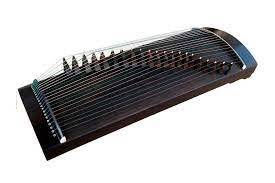
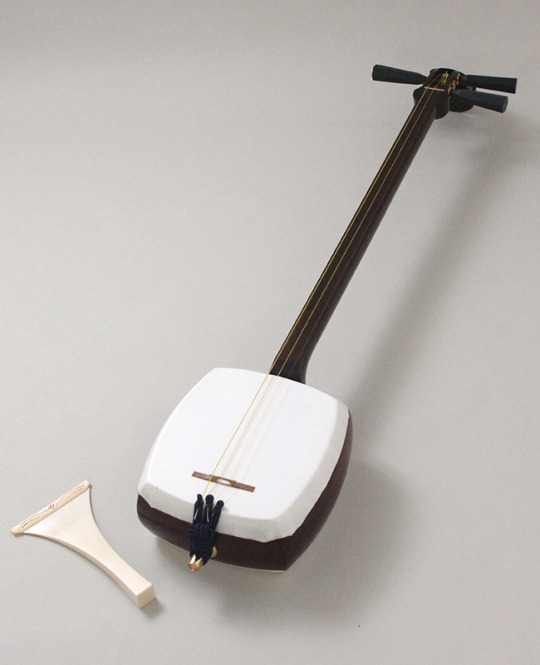
Photo of a Guzhen and a Shamisen, respectively
.
.
.
TRIVIA
On Underverse's opening for season 2, Ink!Sans can be seem between a field of Sakura trees or Cherry Blossoms (桜).
Cherry blossom trees are an icon of Japan. Some people even call the cherry blossom Japan’s informal national flower. The Japanese school year starts in April, during cherry blossom season. The flowers symbolize good luck, love, and springtime. Since they bloom for such a short time, cherry blossom trees also represent human mortality. They remind us how short and precious life is.
In the same series, Ink is also drawn in a Sumi-e inspired style for the 'Soulless Heart Instrumental' video. Such artwork features Japanese writing in black ink.
Ink's canon instrument is the flute. Although invented in ancient germany, the flute is highly associated with East Asian cultures and it's music, chinese and japanese culture are the main ones . Other than that, Comyet already made a connection to Ink's asian influence and the instrument itself.
According to research made by the University Microfilms International (UMI) affirms that the moderny performance and melody of the instruments has clear East Asian roots, mainly from Chinese and Japanese style of music.
'The flute is a particularly appropriate instrument for such a
study because of its versatility of pitch and timbre, the latter being
one of the most important elements in Eastern music; it is capable of
'pitch-bending' and infinite changes in tone quality which are impossible
to achieve on instruments of set pitch.
The flute music selected for stud/ shows varying degrees of Eastern
influence. Depending on the nature of the composition, the Eastern
elements may be extremely subtle and difficult for the untrained to
decipher; in other instances the composer makes clear those sounds or
concepts with Eastern roots, either through accompanying explanation or
within the context of the music.'
Sources
1.National Museum of asian art (materials & techniques. Ink section)
2. Asian Brushpaper (an-overview-of-chinese-ink-history)
3. Wikipedia (wiki Hakama-pants)
4. Aikido Journal (Hakama-101)
5. Wikipedia (Mandarin-collar)
6. Kirrin finch (What-is-a-mandarin-collar)
7. University Microfilms International (UMI) (east-asian-presence-in-modern-flute-music)
#ink sans#inktale#undertaleau#utmv au#ink!sans#utmv#inksans#undertale#east asian#au sans#sans au#cultural inspiration
281 notes
·
View notes
Text

the Fëanorians (inspired by traditional Filipino culture)
#i've seen artists depict elves as east asian so here's a different spin on them :>#obviously personal bias here but some aspects of the noldor and their culture remind me of filipino culture#the big extended families and importance on familial connections#quenya! all the vowels#so much family drama#feanorians#maedhros#maglor#ambarussa#amrod#amras#celegorm#curufin#caranthir#the silmarillion#tolkien#elves#illustration#clarisse doodles#tolkien art
798 notes
·
View notes
Text






🪴 Siheyuan | 四合院 🪴
Is a historical type of courtyard residence that is commonly found across China. Designs differ in every region. For example, in the northwest where dust storms are strong, the walls tend to be higher. In the South the houses are built with multiple stories. In the northeast the weather is cold so courtyards are broad and large to increase the exposure to sunlight, and there are more open rooms inside the walls.
#chinese culture#chinese history#chinese architecture#asian architecture#Chinese courtyards#courtyards#china#east asia#siheyuan#east asian cultures#gardens#plants
461 notes
·
View notes
Text
ok we need an e/se asian reader in the taskforce. the first time they get offered tea from price, thinking that it’s hong cha . ends up spitting it out after they take the first sip and realise it’s fucking earl grey . who teaches them torture methods that were simply just what their parents did to them as a kid . who is generally pretty nice, but can scare the living shit out of new recruits if they have to (once again, asian parent skill) . who leans over to price and discreetly asks ‘is that just a white people thing ?” whenever ghost and soap are on their shit .
just them being silly would be funny as fuck should out to all writers who do asian!readers we love you out here
(some of tags r important, please check them)
#written from a chi/malay perspective so may not be accurate to all east or se asian cultures#let’s be real they would make feisty recruits kneel on hard sand and shells for 40 mins if they messed up#that punishment FUCKED my knees as a kid istg#also sorry if this sounds biased against white people it’s really not#more based of how my international student friends sometimes ask ‘is this how your people act’ whenever they see stupid shi go on#sort of just a reflection of racism in asian culture as well i guess ??#cod modern warfare#cod mw2#cod mw3#cod x reader#cod fanfic#john price#captain john price#captain price#john price x reader#price x reader#price cod#captian price#simon ghost riley#simon riley x reader#simon ghost riley x reader#simon ghost x reader#simon riley#john soap mactavish#johnny mctavish x reader#soap cod#soap x reader#soap x you
123 notes
·
View notes
Text
I simply wish that when people did color theory based meta for BL works they did so with the knowledge or acknowledgement that colors mean different things in different cultures instead of solely from an ethnocentric pov
#last twilight#bl meta#gmmtv bl#chaos pikachu speaks#like any meta about gmmtv bls tends to do this and like#red typically references things like luck marriage celebration and not anger in East Asian cultures??#like the colors in the Thailand flag means life blood (red) purity (white) and the monarchy (blue)#colors mean different things in different cultures I'm begging y'all#to stop channeling bandit keith#twins the series
170 notes
·
View notes
Text

#asian folk costume#asian#asia#east asia#asian wedding#着物#kimono#shiromuku#白無垢#羽織#hakama#袴#japan#japanese#japanese wedding#japanese attire#japanese outfit#japanese culture#japanese costume#japanese fashion#japanese folk#woman fashion#women's fashion#man's fashion#man fashion#asian fashion#asian folk#asian costume#asian culture#asian outfit
65 notes
·
View notes
Text

even in a video that explains why people wipe their butt the token ass rep is nightwing… good lord
#nightwing#dick grayson#batman#dc#also as a south East Asian I was hoping this video diucssed the cultural norms that made butt wiping instead of ass washing the norm in -#- the global Notrt but nope I just got nightwing ass ???#fair deal I guess idk
41 notes
·
View notes